RG_Lunatic:
Are you saying that the Spitfire XIV, Tempest, P-51B, and P-38 could exceed the P-47 in dive speed? I don't think so but at present can offer nothing more in support than what appears below.
Chuck Hawks wrote an article "The Best Fighter Planes of World War II." In it, he favored the P-51. He received a letter from Lt. Rip Collins who piloted both P-51's and P-47's in the 35th Fighter Group in the Pacific. Lt. Collins took him to task citing several reasons why the P-47 was a better fighter than the P-51. See number 4 below. If the Corsair's dive speed was "comparable to the P-51" as you mentioned, then Lt. Collins claim would indicate that the P-47 was superior to the Corsair in a dive.
1. The Republic Thunderbolt had a radial engine that could take hits and keep on running. I know of an actual case where a Jug brought a pilot back from Borneo after 8 hours in the air. The pilot landed with the master cylinder and three other cylinders blown out of commission. But the Jug kept chugging along, running well enough to bring its pilot back safely to his base at Morotai. I was there.
2. The Jug's radial engine was air cooled, instead of liquid cooled with a radiator system, like the Mustang's V-12. This is significant because one small caliber hit on an aluminum cooling line in a Mustang would let the coolant leak out, and when the coolant was gone, the engine seized, and the show was over. I took a small caliber hit in a coolant tube over Formosa (Taiwan). When I landed back at base, my crew chief said, "Lieutenant, did you know you got hit?" I replied, "No." He continued, "You took a small caliber shell in the coolant tube on the right side of the engine. I'd give you between 10 and 15 minutes flying time remaining." I had just flown from Formosa, over nothing but the Pacific Ocean, to our fighter strip on Okinawa.
3. The P-47 could fly higher than the P-51. With its huge turbocharger, it could climb to over 40,000 feet. You could just look down at your enemy in a stall and smile.
4. The Jug could out dive the Mustang. As a matter of fact, it could out dive any enemy fighter, and at 7.5 tons loaded, it dove fast! I have personally been in a dive at what we called the "state of compressibility," at nearly 700 mph indicated air speed. I was scared to death, but with a tiny bit of throttle, I pulled it out at about 2,000-foot altitude, literally screaming through the sky.
5. The Thunderbolt had eight .50's. The Mustang had six. That's 33 1/3% more firepower. This made a major difference.
6. The later model Thunderbolt's could carry and deliver 2,500 pounds of bombs. (One 1,000-lb. bomb on each wing, and one 500 lb. bomb under the belly.) This was a maximum load and you had to use water injection to get airborne. But it would do this with sufficient runway. I have done this myself.
In addition to being a first class fighter, it was also a superb fighter-bomber and ground level strafer. Jugs practically wiped out the German and Italian railroads. I have strafed Japanese trains, troops, ships, gunboats, warships, airfields, ammo dumps, hangers, antiaircraft installations, you name it. I felt secure in my P-47.
7. The P-47 was larger and much stronger, in case of a crash landing. The Jug was built like a machined tool. Mustangs had a lot of sheet metal stamped out parts, and were more lightweight in construction. One example was the throttle arm. You can see the difference. What does all this mean? The safety of the fighter pilot.
8. The Thunderbolt had no "scoop" under the bottom. You can imagine what happens during a crash landing if your wheels would not come down (due to damage or mechanical trouble). On landing, it could make the P-51 nose over in the dirt as the scoop drags into the earth. In water (and I flew over the Pacific Ocean most of my 92 combat missions), it could cause trouble in a crash landing because the air scoop would be the first part of the aircraft to hit the water. Instead of a smooth belly landing, anything might happen.
9. The Thunderbolt had a much larger, roomier cockpit. You were comfortable in the big Jug cockpit. In my Mustang, my shoulders almost scraped the sides on the right and left. I was cramped in with all my "gear." I could not move around like I could in the P-47. I found the ability to move a little bit very desirable, especially on seven and eight hour missions.
10. The Mustang went from 1,150-horse power Allison engines to the Packard built Rolls-Royce Merlin engine that had 1,590 hp. The Thunderbolt started out with a 2,000 hp Pratt Whitney engine, and ended up with 2,800 war emergency hp with water injection. That's close to twice the power.
11. The Jug had a very wide landing gear. This made it easy to land just about anywhere, with no tendency to ground loop. Many times we had to land on rice paddies and irregular ground. When you set the Thunderbolt down, it was down. In the Far East, England, Africa, and Italy, this helped you get down and walk away from it. To me, that was very important for the safety of the pilot.
12. The Jug's record against all opposing aircraft is remarkable. The ratio of kills to losses was unmistakably a winner. Thunderbolt pilots destroyed a total of 11,874 enemy aircraft, over 9,000 trains, and 160,000 vehicles.
I don't have the numbers and research you do here. My info is anecdotal. I have an uncle, now passed on, who flew both. He was born in 1922, started off in the WWII draft as an army recruit and volunteered for the air corps. By the time the war was over he was flying P47s. He later flew in Korea and finally F4s in Vietnam. I don't remember the specifics, but I remember the stories.
He often talked about how the jug was better due to more armament, no liquid cooling, and maximum speed in a dive. He talked about the zone of compressibility and how it would approach mach in a dive.
Seems like Davidicus also relies significantly on direct recorded statements from pilots that flew both.
Anonymous Lunatic, don't know about all the moves, URLs, and saved info you can't find. But your assertions seem incredible.

![355fg WRBbar_Jane VI_mar1945 [marshall].jpg](/forum/data/attachments/790/790828-423347c614af85a12d4c9d5d63958778.jpg)
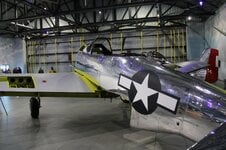
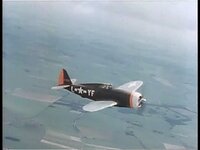
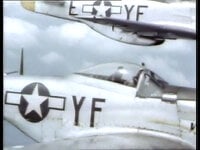
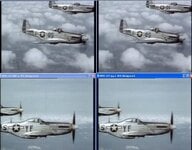
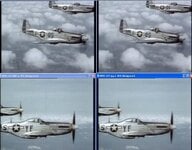
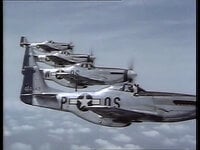
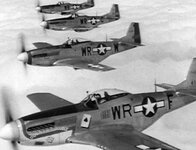
![354 formation shot1-May45 [sloan].jpg](/forum/data/attachments/790/790819-2ee96f89f331d552401bd3fdbe1afa83.jpg)
![354 formation shot 2 [sloan].jpg](/forum/data/attachments/790/790818-ed6085ba69f7b1cbc3e024d352d3dd93.jpg)
![355fg WRBbar_JaneVI Jerry Thompson-CC [thompson].jpg](/forum/data/attachments/790/790829-5e4307eae7a483c95128f503cd2cbbbd.jpg)